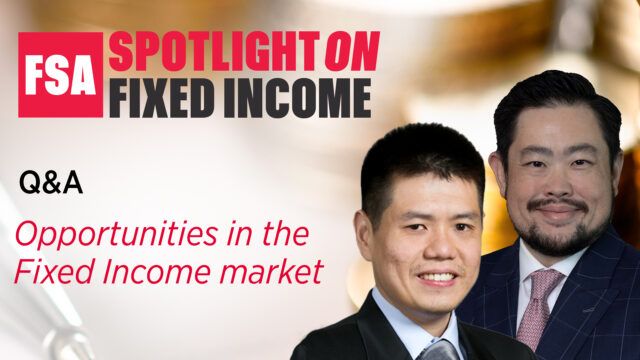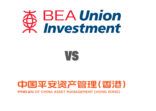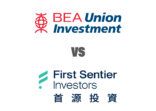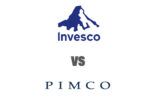How are the opportunities in the fixed income market this year different from 2020?

Portfolio Manager, Eastspring Investments (Singapore) Limited
Rong Ren: 2020 was the year where all asset markets, including bonds, sought to recover from the deep sudden disruption caused by Covid19, and arguably valuations were much more compelling then, making the general investment case much easier.
2021 is a year where expectations of a global economic recovery, facilitated by a vaccine rollout, have been well assimilated by markets. Bonds have been under some pressure as base yields rise in response to stronger growth. This advocates greater caution in taking on duration risks while investing in fixed income, and also picking the best sectors primed to benefit most strongly from economic normalisation.

Executive Director, Head Intermediary Clients, Asia, Vontobel
Benny: The search for income has been in the mind of investors even before 2020 and the outbreak of Covid-19. However, over the last few months, the economic cycle has accelerated more rapidly than ever before, to reach mid-cycle within a matter of months. Equally, near-unanimous consensus expectations like the weakening of the US Dollar that we saw at the end of last year have changed direction altogether, whilst an expected tsunami of corporate defaults has failed to materialize.
For investors, this means that they have to be active in order to cope with these rapid changes and rapidly shift their portfolios as the economic situation has developed, and will need to do so again – repeatedly – as further changes emerge as global recovery continues through 2021.
We believe that to be successful in fixed income investing depends on taking advantage of prevailing market conditions as they change over time. For example, an unconstrained bond manager can shift between asset classes, geographies, sectors and individual bonds to calibrate interest rate and credit risk dynamically as market and economic conditions evolve. We also see attractive opportunities in emerging markets debt and we expect to see higher allocations to emerging markets over time.
Are there key markets or sub-asset classes this year that should provide investors investment opportunities?

Portfolio Manager, Eastspring Investments (Singapore) Limited
Rong Ren: Specific to Asia, China’s recent commitment to attain carbon neutrality by 2060 will certain drive strong momentum in ESG investments. From a regulatory perspective, this means that more likely than not, Chinese companies will have to fall in line to support the central government’s environmental objectives.
This will provide fresh impetus to Green initiatives amongst Chinese corporates, which in turn means we will likely see more ESG related bonds emerge out of China as part of broader Green Financing plans.
Sectors that have taken the lead in this ESG movement include bonds issued to finance Green transportation, for eg electric, energy efficient railway lines, and also bonds issued by Chinese property developers to build energy efficient buildings. So transportation and real estate development are two early adopters of ESG driven initiatives, and we should therefore see interesting opportunities here.

Executive Director, Head Intermediary Clients, Asia, Vontobel
Benny: Today more than 30% of the bond universe has negative returns. However, if we take a look at the other side of the coin, that 30% negative yielding means 70% is positive yielding. So the cup is over two-thirds full. Of course, investors needs to be selective and make sure they are compensated for the risk they take. We see attractive opportunities in emerging markets and corporate credit asset classes where there are still plenty of pockets with substantial yield to be found, for both risk-averse and risk-taking investors.
Improving credit quality in emerging markets corporates results in capital appreciation, while coupons provide a rare source of income in a low-rate world. At a time when rising rates are a major concern for many investors, the lower interest-rate sensitivity of the asset class provides an additional benefit. Emerging market bonds offer an elevated level of spreads and it’s for the individual investor to assess if they feel the potential remuneration on offer is sufficient. This will depend on investors’ personal risk tolerance and their ability to differentiate good risks from bad risks. Investors who can successfully differentiate between the two are in a position to generate alpha. We believe that investors should not shun the volatility associated with price overreactions in emerging markets. On the contrary, they should embrace it and take the opportunity to generate income uncorrelated with the broader market.
In credit, investors should take a slightly pro-cyclical approach to try to maximize returns as this new cycle progresses, for example by investing in companies with strong balance sheets, visibility on future earnings. Regulated entities like insurance companies and utilities as well as investing in subordinated bonds of a company rather than the senior bond are attractive options.
The Fund Selector Asia Spotlight On: Fixed Income will run on 3 – 6 May and ends with a LIVE event (on the 6th) where we will bring together a panel of fund selectors and the fund managers to discuss their views and join an interactive Q&A session.
Find out more about our Spotlight On: Fixed Income here: https://fundselectorasia.com/spotlight-on/fixedincome/

















